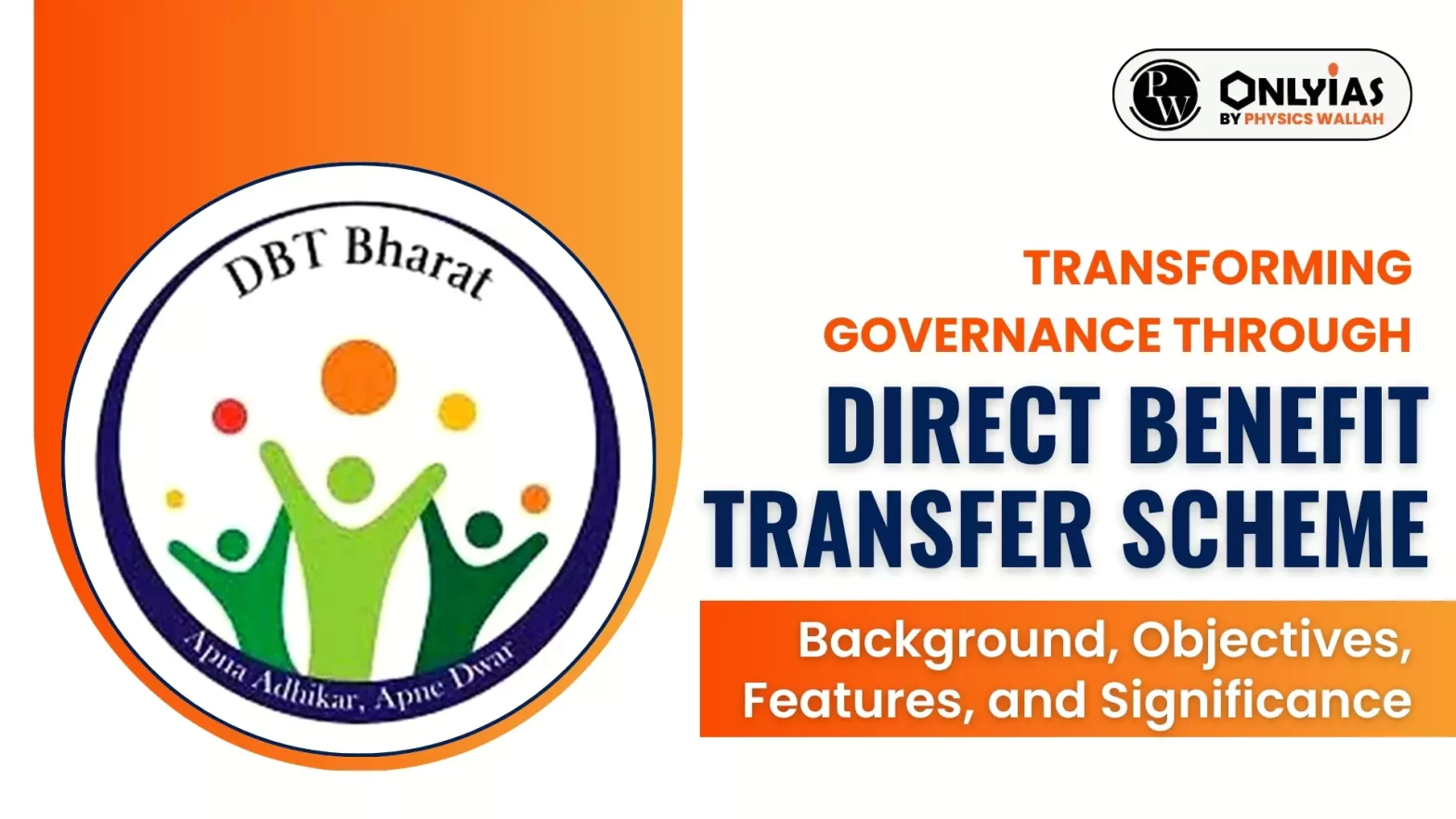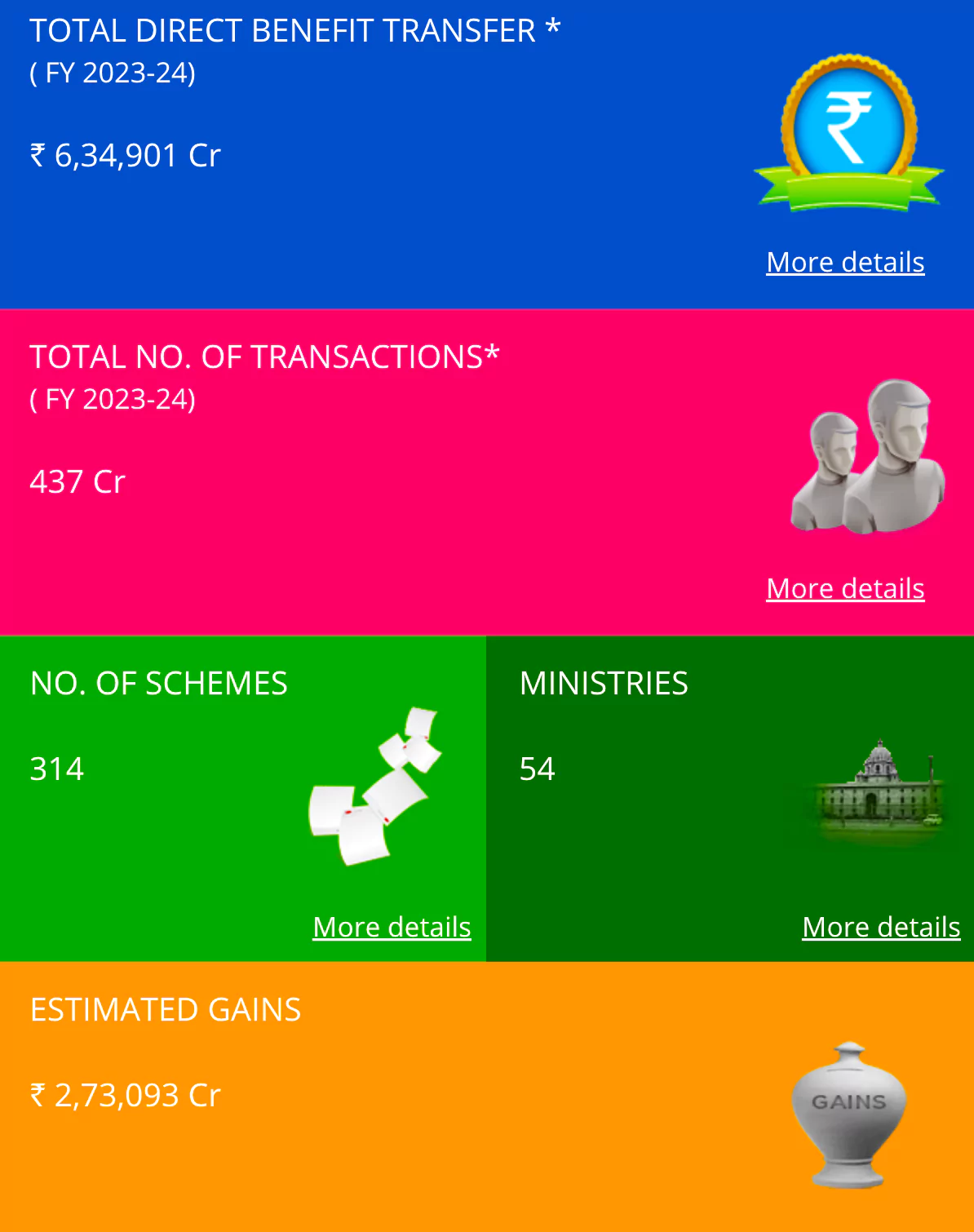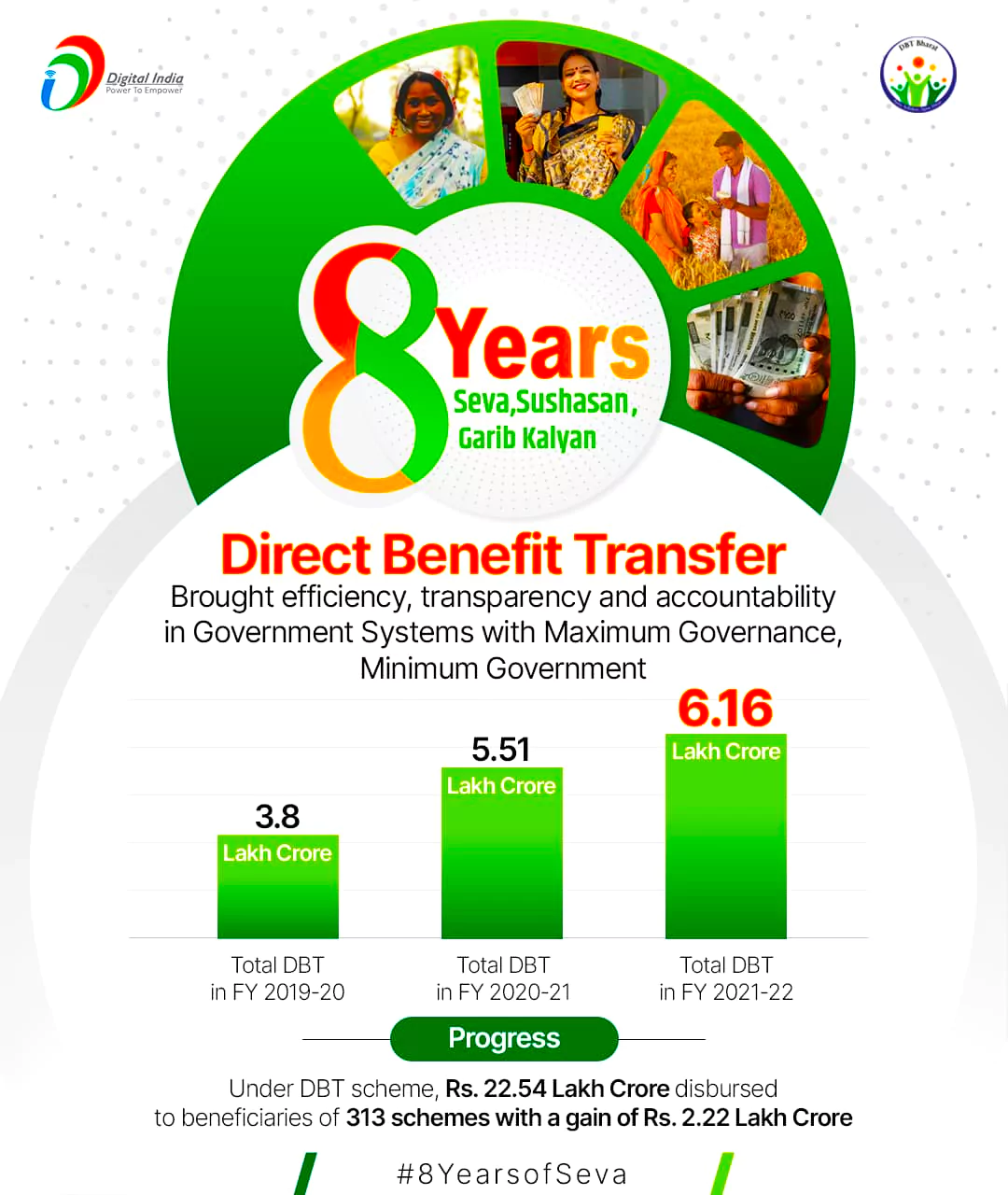The evolution and impact of India's Direct Benefit Transfer (DBT) scheme, a revolutionary approach to subsidy delivery. Click to download DBT Scheme pdf, here.

The Direct Benefit Transfer (DBT) Scheme of the Government is a breakthrough in the panorama of welfare schemes in India, geared toward lowering leakages, removing intermediaries, and ensuring the effective transfer of subsidies and welfare to the intended recipients, The DBT Full form is Direct Benefit Transfer, With the advent of DBT authorities have launched a Program for transparent and good governance, leveraging technology to empower citizens and streamline the subsidy delivery method.
The full form of the “DBT Scheme” in terms of government welfare efforts in India is Direct Benefit Transfer. The DBT scheme is a major government reform initiative in India that aims to re-engineer the process of delivering government subsidies and benefits to citizens. The main objective is to transfer benefits and subsidies of various social welfare schemes directly into the bank account of the beneficiary, eliminating intermediaries.
The Direct Benefit Transfer (DBT) scheme, initiated by the Government of India, marks a significant milestone in welfare scheme delivery.


Direct Benefit Transfer (DBT) comprises several crucial components that ensure its effective implementation.
The main idea behind DBT is to put government money directly into the right person’s bank account, making the whole process much better and safer.
Stops Corruption: DBT is like a direct digital pipeline. It removes middlemen, which instantly stops scams, fraud, and the theft of public money. This makes the entire system transparent and accountable.
Faster and Safer Payments: The financial help (like subsidies or grants) goes straight to the bank account of the person who needs it. This means payments are made quickly and securely.
Reaches the Right People: The government can accurately target who should receive the benefit. By linking accounts, often with Aadhaar, it ensures the money goes to the correct individual, preventing one person from claiming benefits multiple times (restricting duplication).
Better Communication: It creates a direct line between the government and the citizen, making it easier to share information and distribute funds to people in both cities and villages.
Covers Many Programs: DBT isn’t just one scheme; it’s a payment method used for many different government programs, including subsidies for LPG (gas cylinders), various scholarships, and welfare programs like Janani Suraksha Yojna.
Current Status: There are 314 DBT Schemes from 54 Ministries under DBT (2023). Some important DBT schemes are:
| Scheme Name | Description |
| MGNREGA (Mahatma Gandhi National Rural Employment Guarantee Act) | Provides employment opportunities to rural households through guaranteed wage employment. |
| PDS (Public Distribution System) | Ensures food security by distributing essential commodities such as rice, wheat, and sugar at subsidised rates. |
| NSAP (National Social Assistance Program) | Provides financial assistance to the elderly, widows, and disabled individuals living below the poverty line. |
| PAHAL (Pratyaksha Hastaantarit Laabh) | Direct Benefit Transfer for LPG (DBTL) Scheme aimed at reducing leakages in LPG subsidy distribution. |
| PM-KISAN (Pradhan Mantri Kisan Samman Nidhi) | Provides income support to small and marginal farmers by directly transferring funds into their bank accounts. |
| PMUY (Pradhan Mantri Ujjwala Yojana) | Provides free LPG connections to women from Below Poverty Line (BPL) households to promote clean cooking fuel. |
| PMJDY (Pradhan Mantri Jan-Dhan Yojana) | A financial inclusion program that provides access to banking services, including DBT, to the unbanked population. |
| NSAP (National Social Assistance Program) | Provides financial assistance to the elderly, widows, and disabled individuals living below the poverty line. |
| SSA (Sarva Shiksha Abhiyan) | Aims to provide universal access to quality education by supporting infrastructure and teacher salaries. |
| NPS (National Pension System) | A voluntary pension scheme for individuals to create retirement savings, with contributions from employees and employers. |
| PMGDISHA (Pradhan Mantri Gramin Digital Saksharta Abhiyan) | Aims to make rural households digitally literate by imparting digital education and skills training. |
| PM-KISAN (Pradhan Mantri Kisan Samman Nidhi) | Provides income support to small and marginal farmers by directly transferring funds into their bank accounts. |
| NRLM (National Rural Livelihoods Mission) | Supports rural households in accessing sustainable livelihood opportunities through self-help groups and financial assistance. |
| Mid-Day Meal Scheme | Provides nutritious meals to schoolchildren to improve attendance, retention, and overall health. |
| PMFBY (Pradhan Mantri Fasal Bima Yojana) | Offers crop insurance to farmers against crop loss due to natural calamities, pests, or diseases. |
| Strengths of Direct Benefit Transfer | Weaknesses of Direct Benefit Transfer | Opportunities in Direct Benefit Transfer | Threats in Direct Benefit Transfer |
| Reduces leakages and pilferage of subsidies | Exclusion errors might also arise, main to eligible beneficiaries being overlooked | Expansion of coverage to greater welfare schemes | Implementation challenges including Aadhaar authentication screw-ups |
| Promotes monetary inclusion | Connectivity troubles in faraway areas may additionally restrict operation | Improved governance through greater transparency and accountability | Privacy worries concerning Aadhaar-linked transactions |
| Enhances performance in subsidy delivery | Limited focus among beneficiaries might also result in underutilization | Encourages innovation in provider shipping mechanisms | Political interference or manipulation of DBT schemes |
| Empowers beneficiaries by way of giving them manage over their finances | Operational demanding situations together with delays in fund transfers may arise | Targets marginalised businesses for social inclusion | Inadequate grievance redressal mechanisms leading to dissatisfaction |
| Targets subsidies to eligible beneficiaries successfully | Requires widespread administrative and logistical resources | Drives digital transformation throughout sectors | Risks of biases in beneficiary selection or resource allocation because of political influences |
The journey of the Direct Benefit Transfer scheme from its inception to nationwide implementation showcases the government’s commitment to modernise welfare program delivery and ensure the efficient utilisation of resources for the benefit of the citizens.
| Must Read | |
| NCERT Notes For UPSC | UPSC Daily Current Affairs |
| UPSC Blogs | UPSC Daily Editorials |
| Daily Current Affairs Quiz | Daily Main Answer Writing |
| UPSC Mains Previous Year Papers | UPSC Test Series 2024 |
DBT is a scheme by the Government of India to transfer subsidies and welfare benefits immediately to the bank accounts of eligible beneficiaries.
DBT works by linking the Aadhaar identity card with the beneficiary's bank account to ensure correct and obvious transfer of subsidies and benefits.
DBT enables in lowering leakages, enhancing financial inclusion, improving performance, empowering beneficiaries, and focusing on subsidies effectively.
DBT covers a huge range of schemes throughout numerous ministries, along with agricultural, social welfare, pension, and healthcare schemes.
While efforts are made to sign up all eligible beneficiaries, there can be instances of exclusion errors because of incomplete information or different elements.
Beneficiaries can check their DBT payments through the detailed government portals or by their bank branches and checking their account statements.
Aadhaar is not obligatory, however it facilitates seamless authentication and guarantees accurate disbursal of advantages. However, alternative identification strategies are available.
Grievance redressal mechanisms are in vicinity, inclusive of helplines, online portals, and specific officers, to cope with problems and worries raised by beneficiaries.
DBT has led to great reduction in leakages, stepped forward targeting of subsidies, greater transparency, and empowered beneficiaries by giving them direct management over their price range.
Challenges encompass exclusion errors, connectivity issues, operational hurdles, constrained recognition among beneficiaries, and issues regarding privacy and security of Aadhaar facts.
DBT encourages beneficiaries to open bank debts, thereby selling economic inclusion and allowing them to get admission to various banking services and authorities benefits without delay.

<div class="new-fform">
</div>